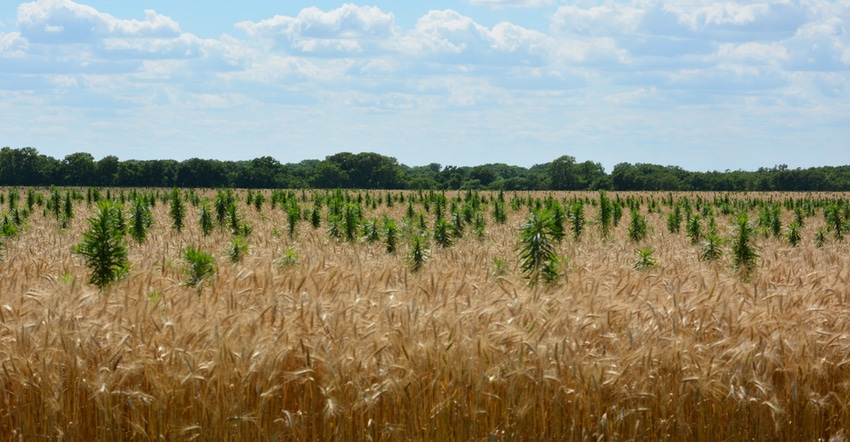
A cool, wet May such as Kansas experienced this year, followed by a hot June, gives weeds an advantage in fields of growing crops.
For wheat growers, a common culprit is marestail, which begins poking its green head above the ripening wheat just a week or two before harvest.
For wheat growers, there’s not much that can be done at that point. There are no herbicides that are labeled for use on wheat once it has headed out.
Once wheat is harvested, however, there are a number of options, according to Sam Knott with Atticus LLC, a company that holds a wide portfolio of branded, generic crop protection products. Whether or not the harvested field is double-cropped, it needs to be sprayed to kill troublesome weeds like marestail, and to control volunteer wheat.
“I would recommend spraying the stubble with paraquat — our Atticus brand is Purgatory — at the rate of 2.5 to 3 pints per acre to significantly knock that marestail back,” Knott says. “If you are planning to plant soybeans as a double-crop, I’d recommend an additional application of flumioxazin like Zaltus SX to get residual control of any of the broadleaf weeds that can be a problem.”
For growers who don’t plan to double-crop, it’s still important to control volunteer wheat in the stubble.
“It’s good stewardship for that land, and it’s the right thing to do for your neighbors,” he says. “The wheat curl mite will populate in wheat stubble, and the volunteer wheat will be a bridge for the mites to infect the fall-planted new wheat crop and cause an infection with wheat streak mosaic virus.”
Knott says he would use a combination of glyphosate to kill volunteer wheat and summer annual grasses and 2,4-D to kill the marestail and other weeds that glyphosate struggles with.
As for the newer dicamba technologies that a recent court ruling cast into limbo, the advice is stay up to date. The U.S. Environmental Protection Agency is allowing dicamba applications to occur if the product was in the possession of a retailer or a grower as of June 3 up to the cutoff window for dicamba post-application dates.
“There is still a window for many acres already planted to be sprayed,” he says. “However, ag retailers as well as growers in Kansas and elsewhere will need to stay up to date on the latest local instructions to stay in compliance with the law.”
Knott says Atticus has a robust portfolio of soybean herbicides that can be used in burndown, residual and postemergence to give soybean farmers for optimal weed control this season. Those include Forsyte, a fomasafen herbicide, and Derecho, which is acifluorfen chemistry.
“These are technologies that have been around for a long time and they are trusted by farmers and retailers to do a good job,” Knott said.
Knott said Atticus also has a strong portfolio of post-patent, generic chemistries that provide good control of weeds, insects and diseases for growers that are seeking lower-cost alternatives for crop protection.
Visit Atticus online for more information.
Read more about:
MarestailAbout the Author(s)
You May Also Like






